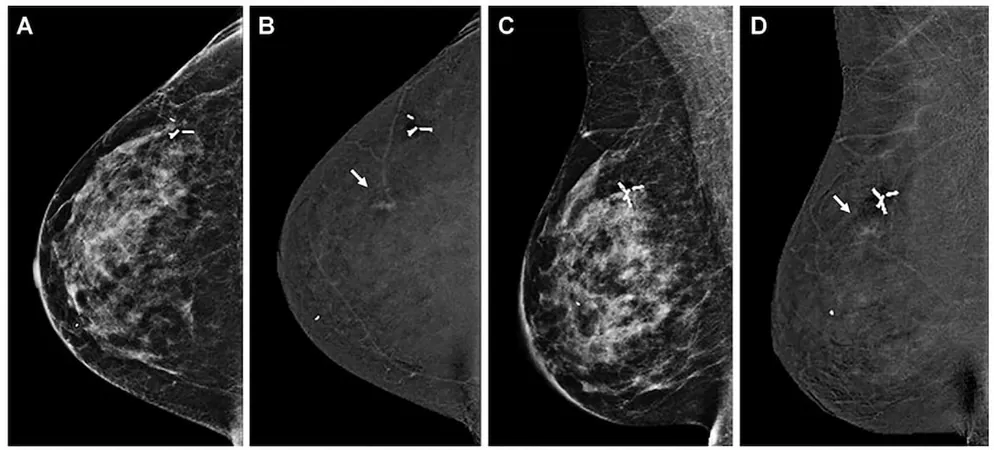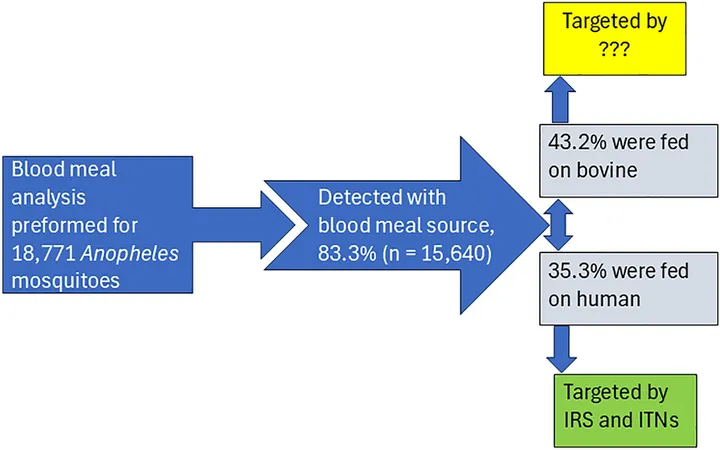
Revolutionary Study Unveils Contrast-Enhanced Mammography as a Game-Changer for Screening Dense Breasts
2024-10-02
Recent breakthroughs in breast cancer detection signal hope for millions of women.
A new study reveals that contrast-enhanced mammography (CEM) boasts a staggering sensitivity rate for identifying breast cancer in women with extremely dense breasts—far surpassing traditional low-energy mammography methods.
This groundbreaking research, published in the esteemed journal Radiology, analyzed data from 1,264 CEM screening exams, involving 609 patients with dense breast tissue, with a mean age of 49.8 years. The findings are eye-opening: CEM successfully diagnosed 16 out of 18 breast cancer cases, achieving an impressive sensitivity rate of 88.9% compared to a meager 27.8% for traditional low-energy mammography, which identified only 5 cases.
Why This Matters: The Case for CEM
Lead author Dr. Noam Nissan, affiliated with the Department of Radiology at Memorial Sloan Kettering Cancer Center in New York, emphasized the importance of these findings: “This study demonstrates the indispensable value of contrast-enhanced imaging for early breast cancer detection among women with dense breasts.” With most detected cancers categorized as T-stage 1, node-negative invasive carcinomas, CEM could emerge as a pivotal tool in combatting aggressive breast cancer before it escalates.
While traditional mammography exhibited a higher specificity rate (96.2% versus 88.9% for CEM), the latter showcased improved specificity in follow-up exams (90.7%). This suggests that as physicians gain more experience with CEM, the need for additional evaluations could be significantly reduced, offering a more streamlined screening process.
Key Insights from the Study:
1. Unparalleled Sensitivity: The stark contrast in sensitivity rates highlights CEM's effectiveness in the early detection of breast cancer, particularly in patients with dense breast tissue.
2. Growing Reliability: CEM’s specificity may improve over time as practitioners become more adept at interpreting these advanced images, making it a reliable choice for follow-up screenings.
3. Future of Screening Protocols: Experts support the idea that CEM should soon be integrated into standard breast cancer screening routines, especially for women classified as high-risk due to dense breast tissue.
An accompanying editorial from Dr. Marc B.I. Lobbes reinforced the necessity for larger trials to validate these promising results, but he remains optimistic about CEM's role in women's health: “The time to adopt contrast-enhanced mammography as a standard screening tool is approaching. It’s not a question of 'if' but 'when' and 'in which populations' we will implement this innovative approach.”
As advancements such as CEM continue to reshape the landscape of breast cancer detection, it’s clear that women with dense breasts stand to benefit immensely. Stay tuned as the medical community pushes forward to refine screening practices and improve outcomes in breast cancer diagnosis!
Is CEM the Future of Breast Cancer Screening?
The promise of early detection could save countless lives—don’t miss the developments as we move closer to integrating this revolutionary method into routine care!




 Brasil (PT)
Brasil (PT)
 Canada (EN)
Canada (EN)
 Chile (ES)
Chile (ES)
 España (ES)
España (ES)
 France (FR)
France (FR)
 Hong Kong (EN)
Hong Kong (EN)
 Italia (IT)
Italia (IT)
 日本 (JA)
日本 (JA)
 Magyarország (HU)
Magyarország (HU)
 Norge (NO)
Norge (NO)
 Polska (PL)
Polska (PL)
 Schweiz (DE)
Schweiz (DE)
 Singapore (EN)
Singapore (EN)
 Sverige (SV)
Sverige (SV)
 Suomi (FI)
Suomi (FI)
 Türkiye (TR)
Türkiye (TR)